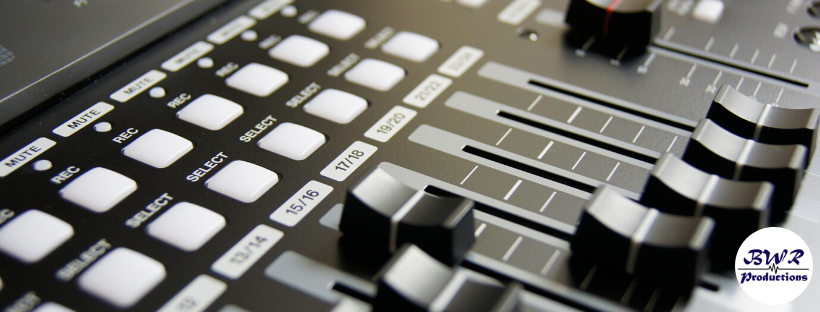
What is Audio?
Audio is the reproduction of sound. This also refers to the the frequencies that are audible to the human ear 20Hz to 20kHz.
For the purpose of today’s blog we will focus on sound being defined as the reproduction for sound. We will also be focusing mainly on sound as used/ as it relates to the entertainment and events industry. But before we dig into that let just see how sound works.
How sound waves work.
Sound waves exist as variations of pressure in a medium such as air. They are created by the vibration of an object, which causes the air surrounding it to vibrate. The vibrating air then causes the human eardrum to vibrate, which the brain interprets as sound.
Sound waves travel through air in much the same way as water waves travel through water. In fact, since water waves are easy to see and understand, they are often used as an analogy to illustrate how sound waves behave.
All waves have certain properties. The three most important ones for audio work are shown here:
- Wavelength: The distance between any point on a wave and the equivalent point on the next phase. Literally, the length of the wave.
- Amplitude: The strength or power of a wave signal. The “height” of a wave when viewed as a graph. Higher amplitudes are interpreted as a higher volume, hence the name “amplifier” for a device which increases amplitude.
- Frequency: The number of times the wavelength occurs in one second. Measured in kilohertz (kHz), or cycles per second. The faster the sound source vibrates, the higher the frequency. Higher frequencies are interpreted as a higher pitch. For example, when you sing in a high-pitched voice you are forcing your vocal chords to vibrate quickly.
Sound Systems
Working with audio means working with sound systems. Naturally, the range of systems available for different applications is enormous. However, all electronic audio systems are based around one very simple concept: To take sound waves, convert them into an electric current and manipulate them as desired, then convert them back into sound waves.
1.The process begins with a sound source (such as a human voice), which creates waves of sound (acoustical energy).
2.These waves are detected by a transducer (microphone), which converts them to electrical energy.
3.The electrical signal from the microphone is very weak, and must be fed to an amplifier before anything serious can be done with it.
4.The loudspeaker converts the electrical signal back into sound waves, which are heard by human ears.

1.The audio signal from the transducer (microphone) is passed through one or more processing units, which prepare it for recording (or directly for amplification).
2.The signal is fed to a recording device for storage.
3.The stored signal is played back and fed to more processors.
4.The signal is amplified and fed to a loudspeaker.
The 3-part audio model
One simple way of visualizing any audio system is by dividing it up into three sections: the source(s), processor(s) and output(s).
•The source is where the electronic audio signal is generated. This could be a “live” source such as a microphone or electric musical instrument, or a “playback” source such as a tape deck, CD, etc.
•The processing section is where the signal is manipulated. For our purposes, we will include the amplifiers in this section.
•The output section is where the signal is converted into sound waves (by loudspeakers), so that it can be heard by humans.
Now imagine a multi-kilowatt sound system used for stadium concerts. Although this is a complex system, at it’s heart are the same three sections: Sources (microphones, instruments, etc), processors and speakers.
Whatever the scale of the project, the same underlying principles of sound reproduction apply.
Reference:
MediaCollege.com https://www.mediacollege.com/audio/01/
